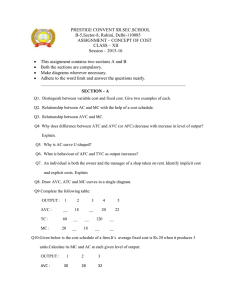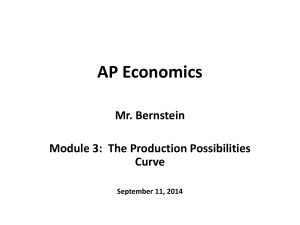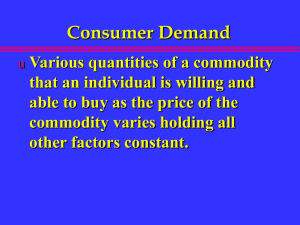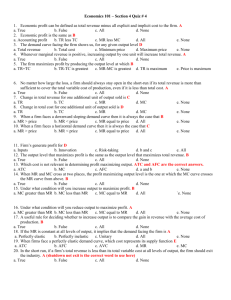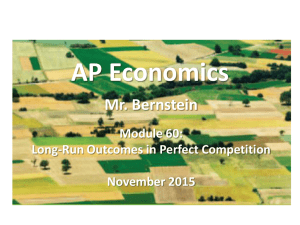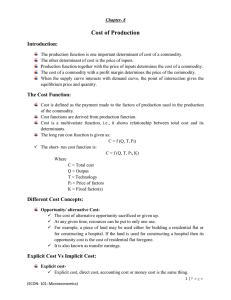Module 55 - Firm Costs
advertisement
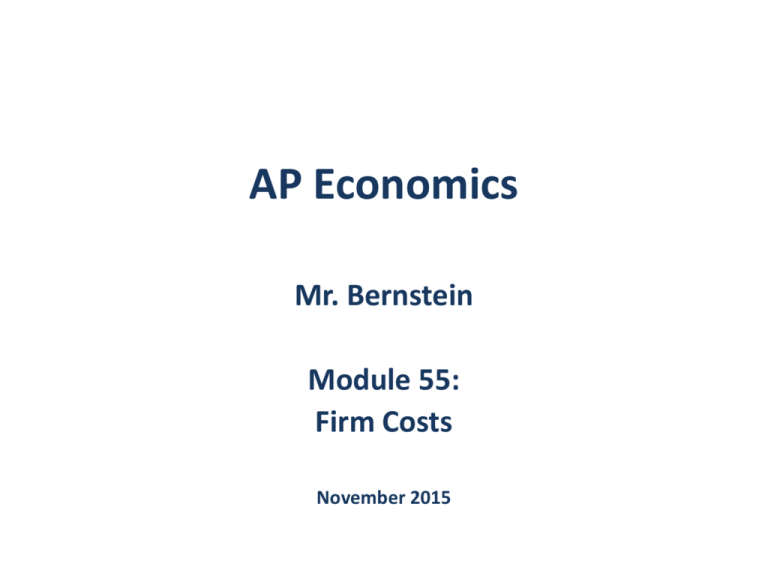
AP Economics Mr. Bernstein Module 55: Firm Costs November 2015 AP Economics Mr. Bernstein Cost Curves • In the short run, there are variable inputs and at least one fixed input • The variable inputs have cost curves • Common abbrev.: T – Total, V – Variable, F – Fixed, A – Average and M - Marginal 2 AP Economics Mr. Bernstein Cost Curves • • • • • • TC = FC + VC FC are fixed (!) and VC vary with output C is on vertical axis and Q on horizontal axis FC is a horizontal line, even at zero production (Q = 0) VC rises faster as output is increased. The shape of TC curve is the same as the shape of VC curve, staying higher by the amount of FC 3 AP Economics Mr. Bernstein Marginal Cost • MC is the slope of the TC curve (and the VC curve) • MC = ΔTC/ΔQ = Δ(VC + FC)/ΔQ = ΔVC/ΔQ • Why does the MC curve initially decline, then eventually rise? • Example: Labor. Specialization causes initial decline. Diminishing Returns eventually turn curve upward. • Reff: Looks like a Nike swoosh, while ATC curve is Ushaped (or a Smiley face) and AVC curve is a “Smirk” 4 AP Economics Mr. Bernstein Average Cost • • • • Per-unit costs ATC = TC/Q; AVC = TVC/Q and AFC = TFC/Q And since TC = TFC + TVC, ATC= AFC + AVC Why is the AC curve U-shaped? • Initially average costs decline as fixed costs are spread over more units • Eventually the effect of Diminishing Returns on variable costs overwhelms the “Spreading effect” 5 AP Economics Mr. Bernstein The Relationship between Marginal and Average Costs • The MC curve intersects the U-shaped AC and AVC curves at their minimum points • AC will fall as long as MC<AC • Once MC rises above AC, AC will begin to rise 6

